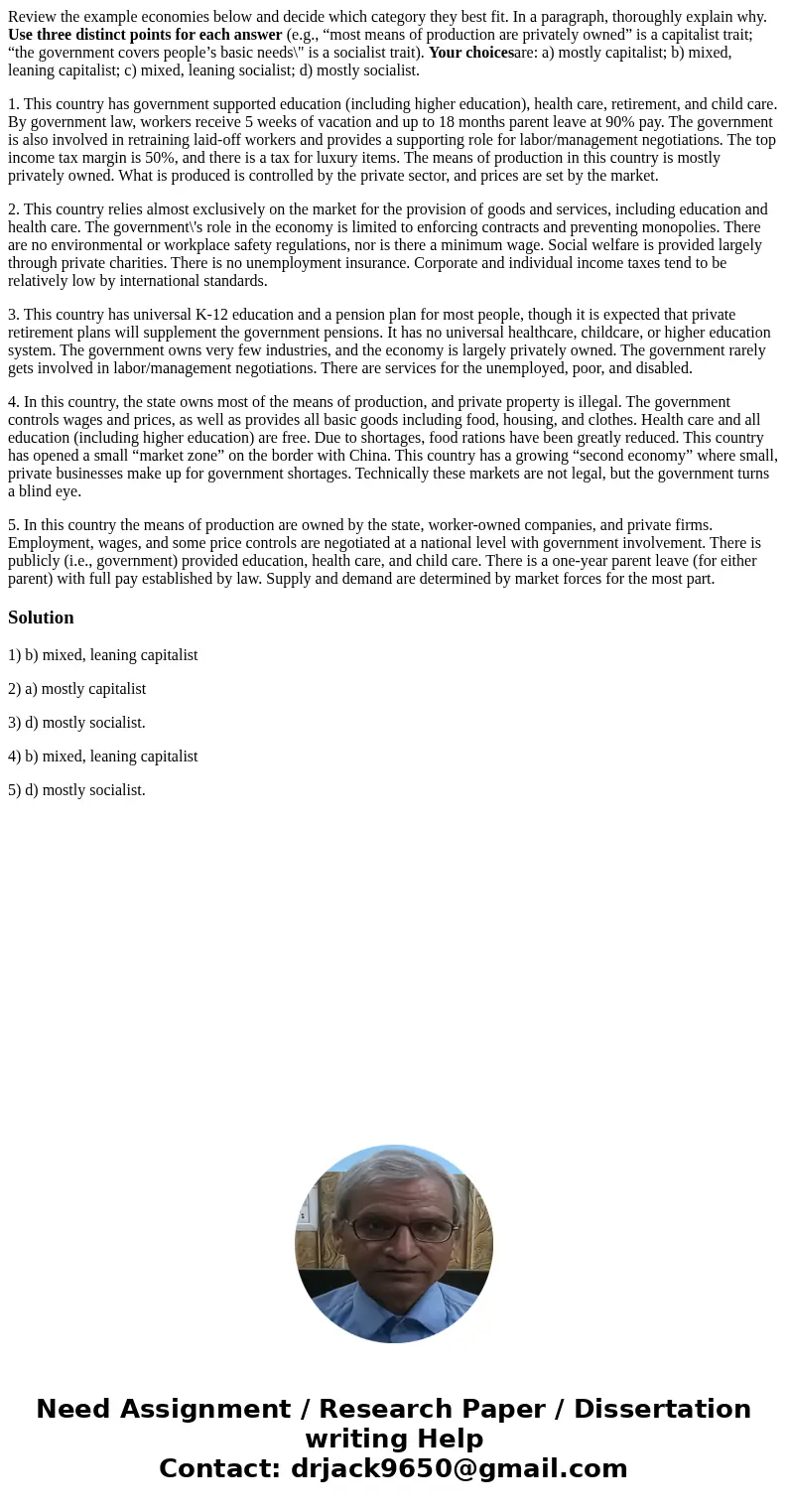Review the example economies below and decide which category
Review the example economies below and decide which category they best fit. In a paragraph, thoroughly explain why. Use three distinct points for each answer (e.g., “most means of production are privately owned” is a capitalist trait; “the government covers people’s basic needs\" is a socialist trait). Your choicesare: a) mostly capitalist; b) mixed, leaning capitalist; c) mixed, leaning socialist; d) mostly socialist.
1. This country has government supported education (including higher education), health care, retirement, and child care. By government law, workers receive 5 weeks of vacation and up to 18 months parent leave at 90% pay. The government is also involved in retraining laid-off workers and provides a supporting role for labor/management negotiations. The top income tax margin is 50%, and there is a tax for luxury items. The means of production in this country is mostly privately owned. What is produced is controlled by the private sector, and prices are set by the market.
2. This country relies almost exclusively on the market for the provision of goods and services, including education and health care. The government\'s role in the economy is limited to enforcing contracts and preventing monopolies. There are no environmental or workplace safety regulations, nor is there a minimum wage. Social welfare is provided largely through private charities. There is no unemployment insurance. Corporate and individual income taxes tend to be relatively low by international standards.
3. This country has universal K-12 education and a pension plan for most people, though it is expected that private retirement plans will supplement the government pensions. It has no universal healthcare, childcare, or higher education system. The government owns very few industries, and the economy is largely privately owned. The government rarely gets involved in labor/management negotiations. There are services for the unemployed, poor, and disabled.
4. In this country, the state owns most of the means of production, and private property is illegal. The government controls wages and prices, as well as provides all basic goods including food, housing, and clothes. Health care and all education (including higher education) are free. Due to shortages, food rations have been greatly reduced. This country has opened a small “market zone” on the border with China. This country has a growing “second economy” where small, private businesses make up for government shortages. Technically these markets are not legal, but the government turns a blind eye.
5. In this country the means of production are owned by the state, worker-owned companies, and private firms. Employment, wages, and some price controls are negotiated at a national level with government involvement. There is publicly (i.e., government) provided education, health care, and child care. There is a one-year parent leave (for either parent) with full pay established by law. Supply and demand are determined by market forces for the most part.
Solution
1) b) mixed, leaning capitalist
2) a) mostly capitalist
3) d) mostly socialist.
4) b) mixed, leaning capitalist
5) d) mostly socialist.

 Homework Sourse
Homework Sourse